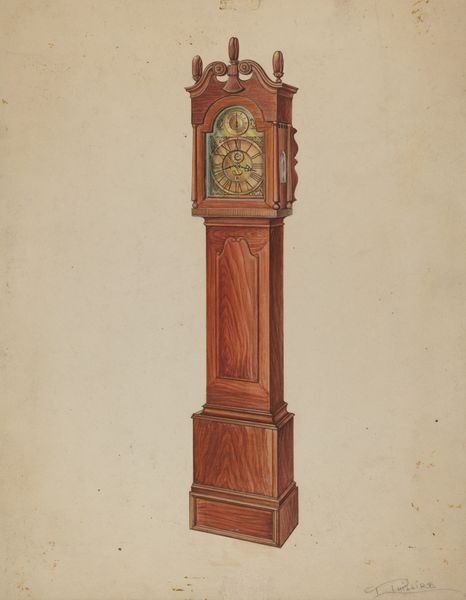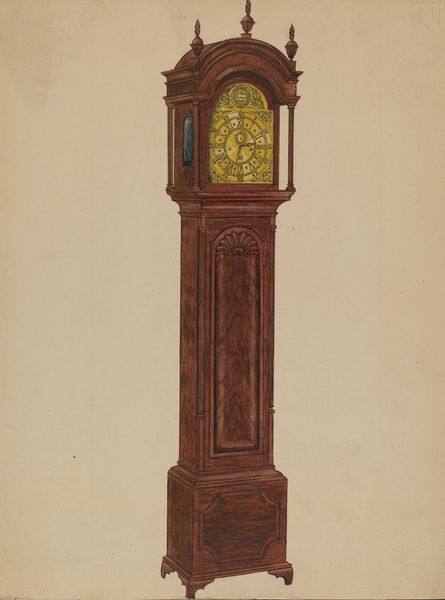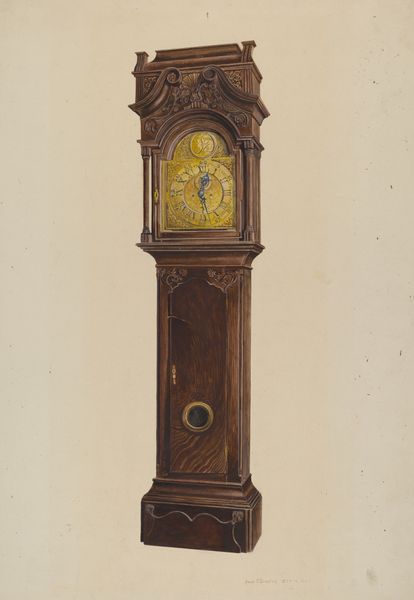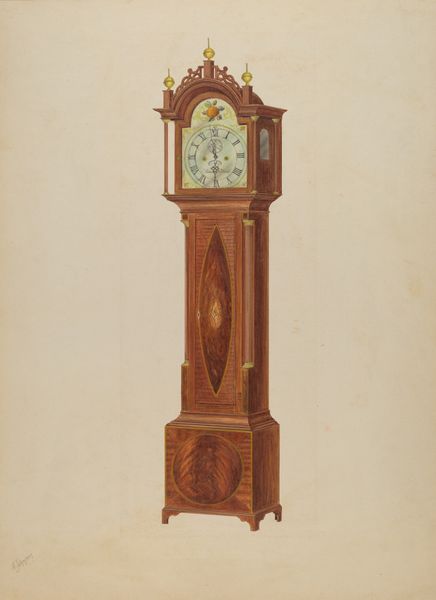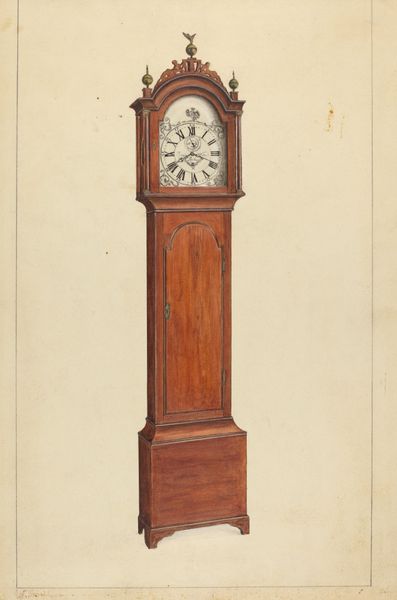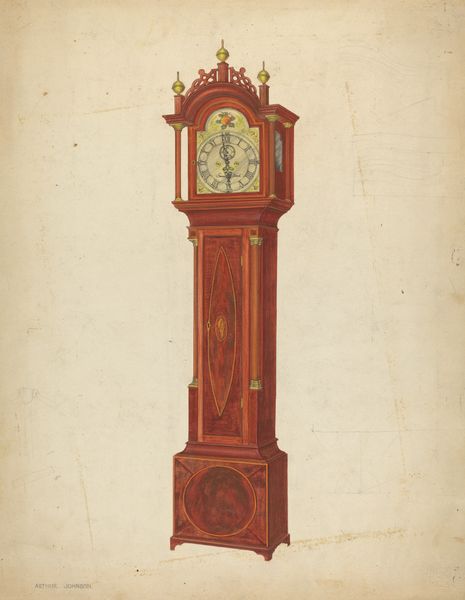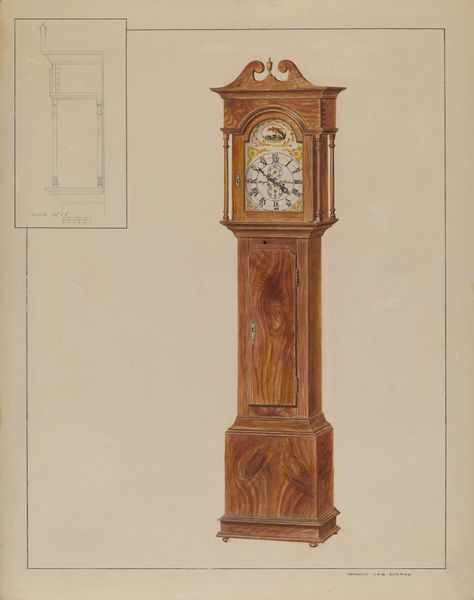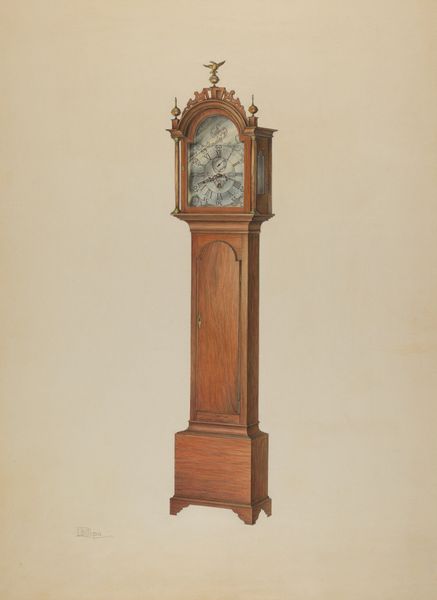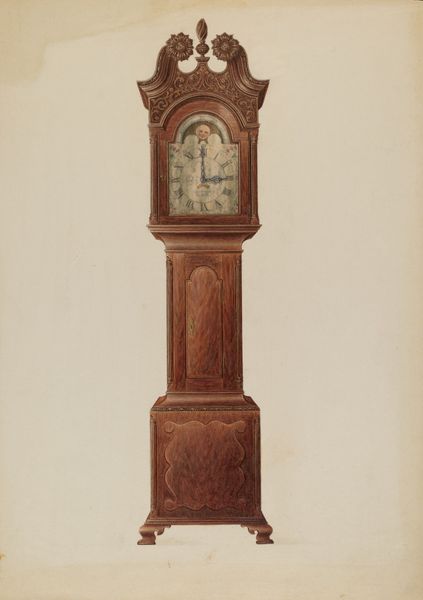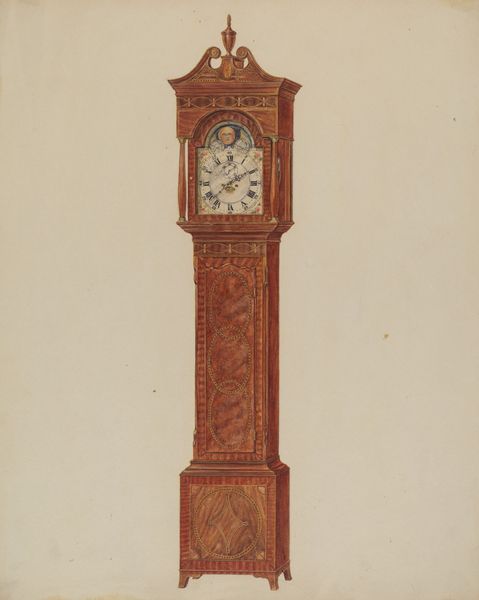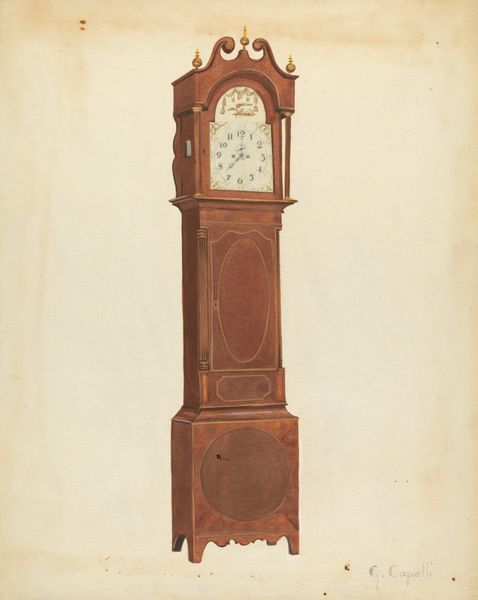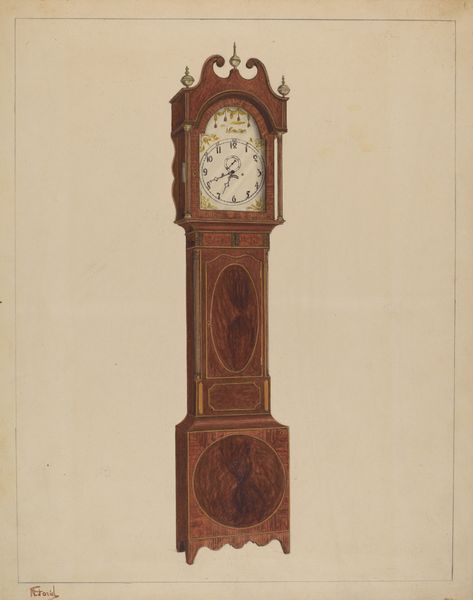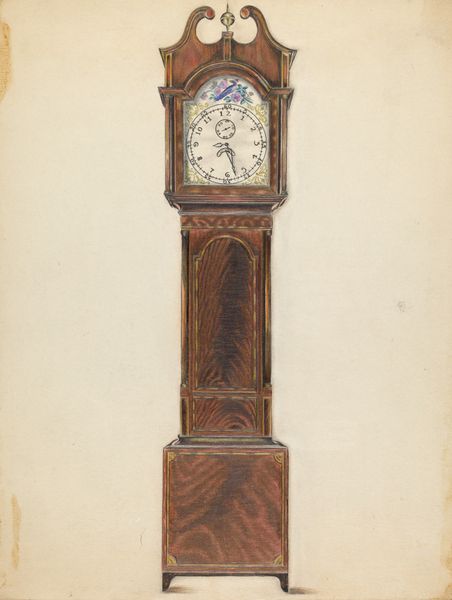
drawing, coloured-pencil
#
drawing
#
coloured-pencil
#
water colours
#
coloured pencil
#
academic-art
Dimensions: overall: 36.5 x 29.1 cm (14 3/8 x 11 7/16 in.)
Copyright: National Gallery of Art: CC0 1.0
Curator: This image by Gilbert Sackerman, simply titled "Clock," was created between 1935 and 1942 using colored pencils. The texture alone gives it a unique charm. Editor: Indeed. I’m immediately drawn to its gentle palette, those muted reds and golds against the plain paper. The composition emphasizes the clock's verticality, a slender monument to domestic timekeeping. Curator: What I find compelling is how the drawing employs common techniques. Think about Sackerman choosing colored pencil – such an everyday, accessible medium— to create a depiction that is itself, decidedly middle-class. Editor: An interesting thought. I see a skilled rendering here. Note the cross-hatching that implies form and shadow, and the artist’s attention to the carved details and inlays of the clock's cabinet. The materials are simple, but the craftsmanship portrayed suggests high skill. Curator: Right. Sackerman's meticulous execution using modest materials creates this sort of tension. By depicting this familiar object using colored pencil, he is raising questions. Is this clock a mass produced object, or custom-made, a signifier of status or something found in any American household? What do its very precise carvings and fittings, if the clock had any, tell us about mid-century material culture? Editor: I think, though, there is also a subtle interplay between stasis and motion, no? This clock, by its very nature, implies the passage of time, yet Sackerman freezes it—captures it as a static form for our study and quiet contemplation. Curator: Precisely. Time made visible and still. And yet, because the "Clock" exists as drawing—a readily reproducible object in itself—we need to keep questioning notions of labor, skill, and mechanical production to be aware of their implications for both the maker and ourselves as viewers. Editor: I can appreciate that viewpoint. Looking at the picture, though, I’m ultimately most struck by its serenity, a tranquil testament to the everyday, transformed by the artist’s eye and the alchemy of form and color. Curator: So, for you, it is more about the impact, than the work it symbolizes. Editor: Exactly! It brings new weight to this artistic rendition, elevating not only our awareness of this familiar piece, but also a meditation on our everyday existence.
Comments
No comments
Be the first to comment and join the conversation on the ultimate creative platform.
